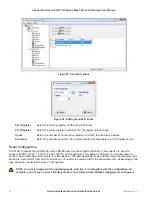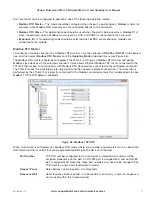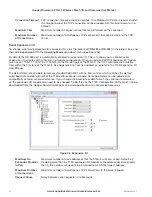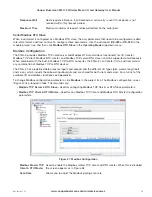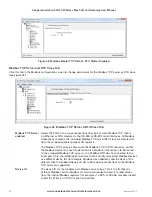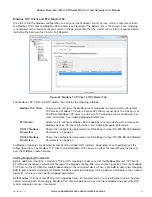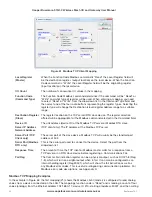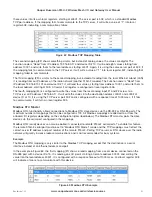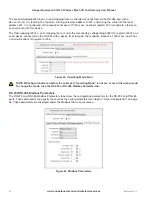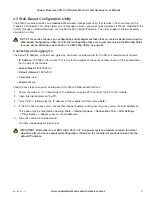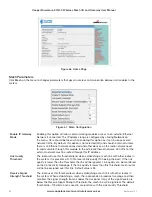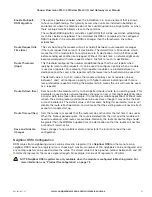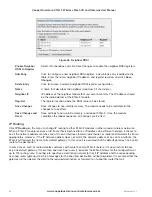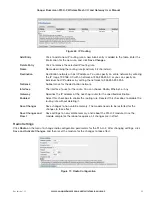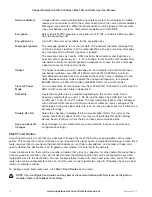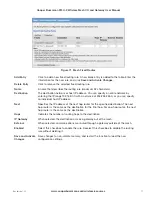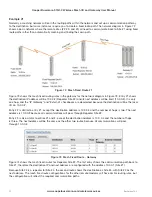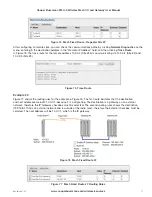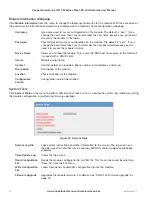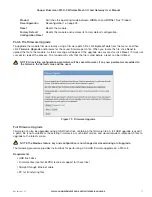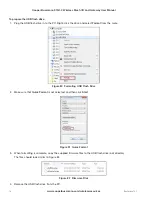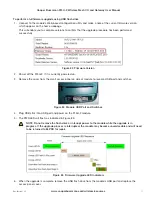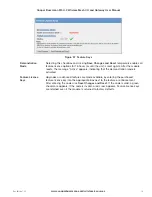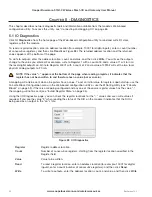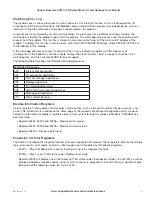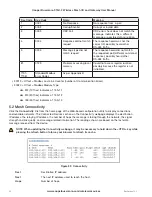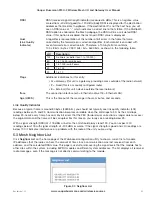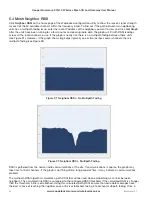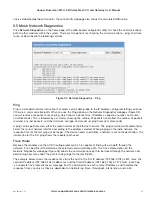
70
www.cooperbussmann.com/wirelessresources
Cooper Bussmann 915U-2 Wireless Mesh I/O and Gateway User Manual
Rev Version 1.2.2
Network Address
Unique address used to differentiate one wireless system from another. All radios
required to communicate within the system need to have the same network address.
Messages received with a different network address will be ignored. This prevents
cross-talk between systems. Valid values are between 0 and 32768.
Encryption
Select 64-bit ELPRO proprietary encryption or 128, 192, or 256-bit AES encryption
from the drop-down list.
Encryption Key
Up to 32 characters are available for the encryption key.
Message Signature
The message signature is a section of data at the head of the radio message that
contains a unique signature that the radio identifies with when receiving messages.
Any message with a different signature is ignored.
The selection varies by country. USA, Australia, New Zealand, and India have a
selection of four signatures (0, 1, 2, 3). In Europe, 5 mW and 500 mW models have
two options—Normal and Compatible. All modules must have the same message
signature to successfully communicate.
Hopset
The hopset or band is country-code specific. For example, US and Canada have
two bands available—Low (902–914 MHz) and High (915–928 MHz). Australia,
New Zealand and India have only one band (the country name is displayed in the
field). European country codes indicate the configured frequency, for example,
869.525 MHz for a 5000-mW model, and 869.875 MHz for a 5-mW model.
Transmit Power
Mode
You can adjust the transmit power level from 30 dB (1W) to 20 dB (100 mW). See the
dBm to mW conversion table in Appendix A.
Data Rate
A selection of data rates is available, depending on the country code. Fixed
frequency models (EU) can use 14, 38, 56, and 76 kbps. The FHSS (US, AU, NZ
and IN) use 19, 56, 76, and 115 kbps. The communicating radio can be configured
with a different data rate and will communicate at whatever rate is configured. The
advantage of using the higher date rate is an increase in speed, but this is offset by a
decrease in range.
Disable Rx LNA
Select this checkbox to disable the low noise amplifier (LNA). This reduces the
receive sensitivity by about 15 dB. You may want to disable this option during
demos, bench testing, or where there are close communication paths.
Save and Activate
Changes
Save changes to non-volatile memory, and restart the function to load the new
configuration settings.
Mesh Fixed Routes
A mesh fixed route is a route that has a fixed path through the mesh that will be used regardless of the signal
quality. This means that communications are not rerouted if the signal quality is degraded. Setting up a mesh fixed
route, requires that you configure the destination address, next-hop router address, and number of hops, and
specify whether the destination is an IP gateway and whether it is external to the network.
In some radio systems, there will be a number of radios that will act as repeaters for other radios. Because these
sites are generally stationary, they do not need to learn the different paths and can be configured to have fixed
route paths back to the destination. You can configure these routes with mesh fixed route rules. Up to 100 fixed
route rules can be configured for each site, and the rules can be targeted to a specific IP address by using a host
route or a complete subnet.
To configure mesh fixed route rules, click
Mesh Fixed Routes
on the menu.
NOTE If you configure fixed routes and any part of the communication path fails (such as the path or
module), there is no fallback to meshing.

